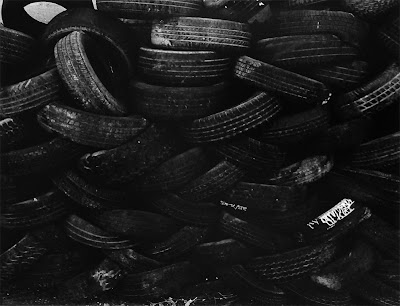Number 8, 1948, by Jackson Pollock, oil on canvas
My daughter was taking an art class at her school on Saturdays earlier this year. I would drop her off, go get some coffee and visit with Rod Klukas at the camera store, then go out and photograph or scout for a few hours until I had to pick Lindsay up. One Saturday I noticed this large painting in one of the art classrooms. I asked Mr. Pesselato about it and he explained they were doing an homage to Jackson Pollock in the Art Club. I thought it was pretty interesting and asked if I could photograph it, to which he agreed.
I spent about an hour and a half photographing it, using a Nikon 120 Macro lens on my 4x5" camera with Velvia 50 so I could get up close and personal. These are all really small snippets of this large painting. Even in this small area the complexity is incredible. I made six images that morning and this is the first one I have scanned. I will post the rest when I have them scanned.
The colors are intense and the abstraction is reminiscent of Brett Weston or Aaron Siskind. Earlier in my photographic career I would have photographed this in black & white. But now, with my new appreciation and understanding of color this was the ONLY way I could photograph it today. I even tried converting it to black & white in Photoshop and it did nothing for me.
Art Club #1, 2009, Richard M. Coda
Below is the original and complete painting by the Art Club of Phoenix Country Day School. It is at least 4x8 feet in dimension. This is actually an Inspiration once removed... the Art Club was inspired by Jackson Pollock, and I was inspired by the students at PCDS. Thanks kids!




















